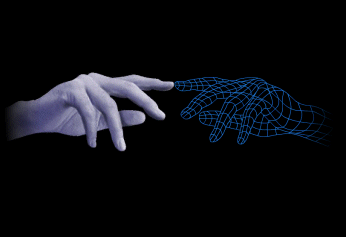http://www.freerepublic.com/focus/f-chat/1572512/posts?q=1&&page=1#1

Posted on 02/11/2006 4:31:06 PM PST by PatrickHenry
On Tuesday, Feb. 14, noted physicist Dr. Franklin Felber will present his new exact solution of Einstein's 90-year-old gravitational field equation to the Space Technology and Applications International Forum (STAIF) in Albuquerque. The solution is the first that accounts for masses moving near the speed of light.
New antigravity solution will enable space travel near speed of light by the end of this century, he predicts.
Felber's antigravity discovery solves the two greatest engineering challenges to space travel near the speed of light: identifying an energy source capable of producing the acceleration; and limiting stresses on humans and equipment during rapid acceleration.
"Dr. Felber's research will revolutionize space flight mechanics by offering an entirely new way to send spacecraft into flight," said Dr. Eric Davis, Institute for Advanced Studies at Austin and STAIF peer reviewer of Felber's work. "His rigorously tested and truly unique thinking has taken us a huge step forward in making near-speed-of-light space travel safe, possible, and much less costly."
The field equation of Einstein's General Theory of Relativity has never before been solved to calculate the gravitational field of a mass moving close to the speed of light. Felber's research shows that any mass moving faster than 57.7 percent of the speed of light will gravitationally repel other masses lying within a narrow 'antigravity beam' in front of it. The closer a mass gets to the speed of light, the stronger its 'antigravity beam' becomes.
Felber's calculations show how to use the repulsion of a body speeding through space to provide the enormous energy needed to accelerate massive payloads quickly with negligible stress. The new solution of Einstein's field equation shows that the payload would 'fall weightlessly' in an antigravity beam even as it was accelerated close to the speed of light.
Accelerating a 1-ton payload to 90 percent of the speed of light requires an energy of at least 30 billion tons of TNT. In the 'antigravity beam' of a speeding star, a payload would draw its energy from the antigravity force of the much more massive star. In effect, the payload would be hitching a ride on a star.
"Based on this research, I expect a mission to accelerate a massive payload to a 'good fraction of light speed' will be launched before the end of this century," said Dr. Felber. "These antigravity solutions of Einstein's theory can change our view of our ability to travel to the far reaches of our universe."
More immediately, Felber's new solution can be used to test Einstein's theory of gravity at low cost in a storage-ring laboratory facility by detecting antigravity in the unexplored regime of near-speed-of-light velocities.
During his 30-year career, Dr. Felber has led physics research and development programs for the Army, Navy, Air Force, and Marine Corps, the Defense Advanced Research Projects Agency, the Defense Threat Reduction Agency, the Department of Energy and Department of Transportation, the National Institute of Justice, National Institutes of Health, and national laboratories. Dr. Felber is Vice President and Co-founder of Starmark.
Source: Starmark [Felber's own firm, apparently]
|
This article was posted next year.
Sure. What news. I can just see flying cars in the future. Not a happy thought for anyone in Hampton Roads who has to contend with the drivers from h$ll here.
You wonder why the Klingons have not paid us a visit, then.
Human travel near the speed of light has already been proven and demonstrated countless times already by the French when they retreat.
Oh??? If that is truly the case, one of the big barriers to FTL/near C travel vanishes. That was hitting individual atoms at that speed would generate a lethal shower of X-rays and secondary particles.
The jury is still out on whether Einstein's equations on general relativity were right, though. That's why they sent up a sattelite last year to test them.
Special relativity is the one that has been proven beyond any reasonable doubt.
Man someday may travel at the speed of light, but bureaucracies will still require at least 30 days to investigate customer complaints.
ROTFLMAO!
http://www.freerepublic.com/focus/f-chat/1572512/posts?q=1&&page=1#1

Well, I don't know anywhere near enough to realistically comment on this, but I'll zip an email to a theoretical physicist friend of mine and get his comments.
Long distance space travel would be real cool and I'll volunteer to be the first to go, one way or round trip.
 Sit Down, Shut Up and Hold On cause HERE WE GO AGAIN, AGAIN, AGAIN, AGAIN, AGAIN...
Sit Down, Shut Up and Hold On cause HERE WE GO AGAIN, AGAIN, AGAIN, AGAIN, AGAIN...
"Beam me up, Scottie"


BTW, PH, is Physicist on your list? [From the title of the thread, it seems like we should congratulate him ;-) ]
Cheers!
I was gonna do this, but I had to fertilize the lawn this weekend.
I also dunno about this one. There are an infinite number of possible solutions. Einstein rejected a 5-dimensional solution because it didn't feel right, which if we might use Einstein's gut as a guide, makes solutions less than nessarily true even if they are exact.
NasaSpaceFlight.com is carrying the story, too...
An abstract from one of his papers on the subject (paper is readable in PDF)
http://arxiv.org/abs/gr-qc/0505098
Shows up in Nasa Daily, too... for Feb 10.
Looks fairly legit, not a crackpot physicist.
I just object to the idea of referring to it as "The Felber Drive"..
" Cap'n, the Felbers are out, we canna escape the Darwinians ! "
" That strange feeling as we approach Light Speed is known as the Felber Effect.."
" We're approaching Felber Speed, Sir ! "
No, I don't like it.. I don't like it at all....
Disclaimer: Opinions posted on Free Republic are those of the individual posters and do not necessarily represent the opinion of Free Republic or its management. All materials posted herein are protected by copyright law and the exemption for fair use of copyrighted works.